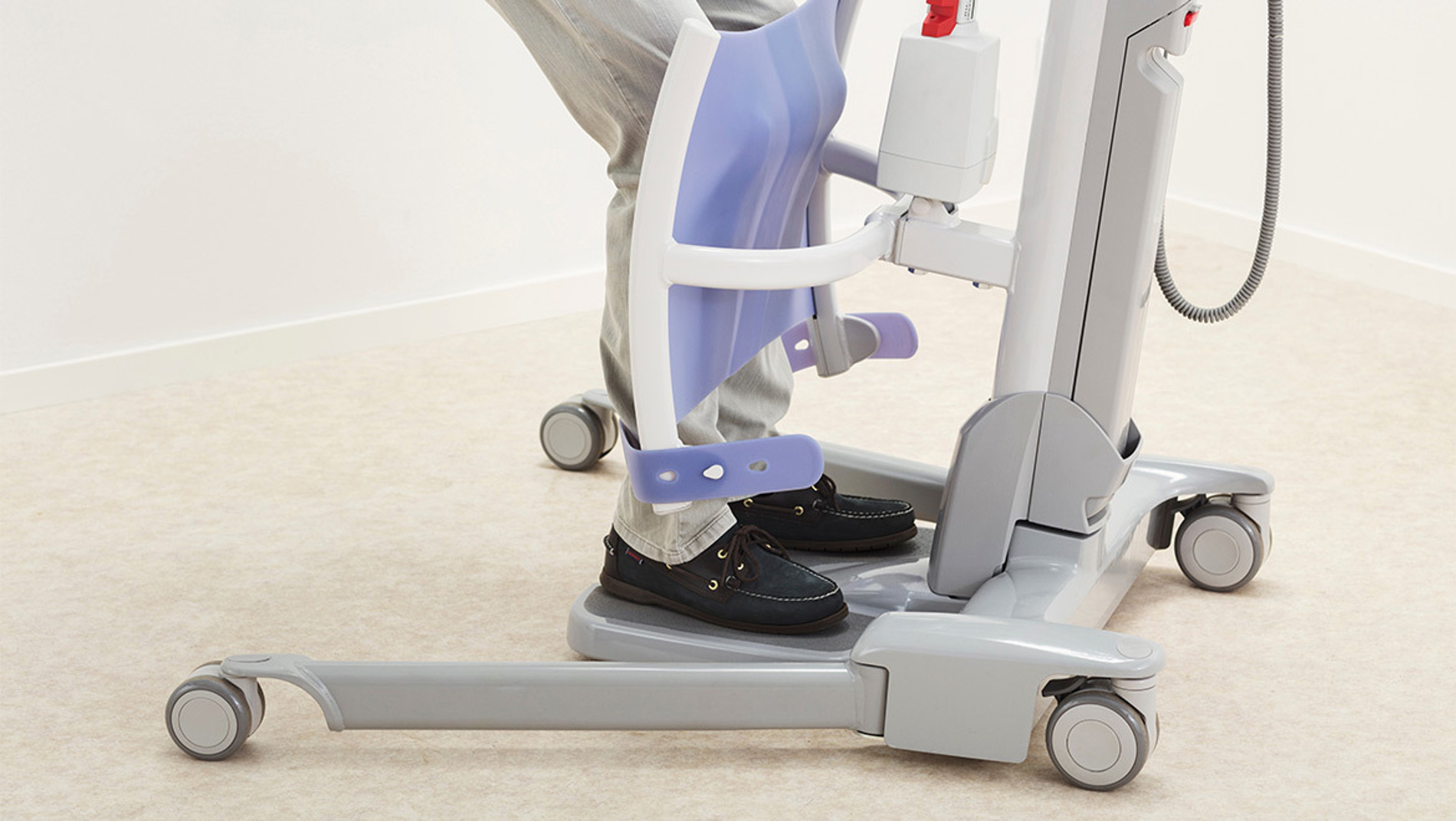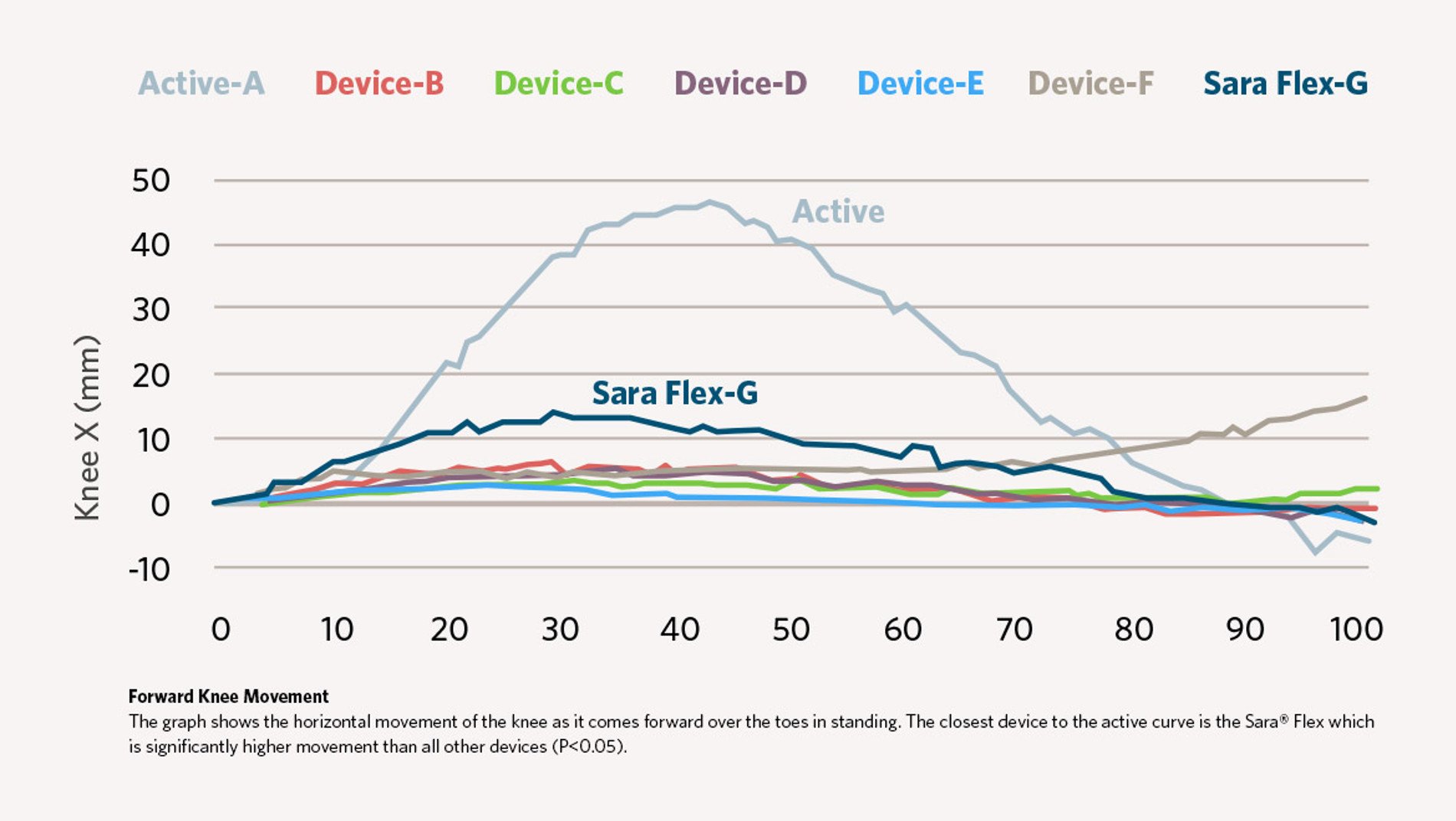Sit to stand study shows Sara Flex 'allows more forward knee movement'
An evaluation of 6 different sit to stand devices for use in rehabilitation shows an 'overwhelming preference' for the Sara® Flex knee support during a study in Loughborough University, UK.

Extract from the whitepaper, An evaluation of sit to stand devices for use in rehabilitation:
'The design and action of most sit to stand assistive devices is considered to be active as the device requires some balance, trunk control and weight-bearing ability in the person being assisted. There is concern that the movement is mostly passive and the support and structure of the device creates and controls all movements in the lower limbs due to fixation at the trunk and knee.
Modern acute healthcare has a clear focus reducing the length of stay in any setting. Consequently any advantage that can be gained by encouraging rehabilitation and a faster improvement in ability is welcomed. This study explores the patterns of movement in natural movement against the movements seen in assisted transfers.
In this study the Sara Flex was shown to:
- Allow more forward knee movement during raising and lowering
- Allow more body weight through the feet during raising

To read more on how Sara Flex allowed more forward knee movement, more body weight through the feet and gave one of the closest center of pressure (CoP) movement patterns to the active unassisted transfer, download the full whitepaper below.





